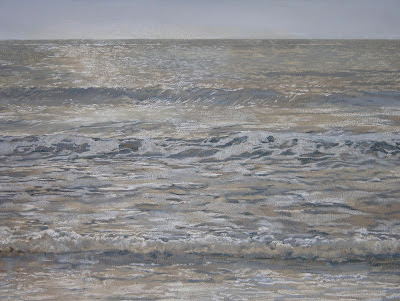I thought I'd post the demo for Monday's watercolor class online. I began with a quick pencil sketch to establish the composition:
Then I painted the sky with a graduated wash of three mixed blues: Cobalt Blue with a bit of Permanent Rose and Viridian at the top; a lighter wash of Cobalt Blue and Viridian below that; and a still lighter wash of Cobalt Blue, Viridian and Winsor Yellow at the bottom.
Next I added in the mountain in the distance with a mix of Viridian and Cobalt Blue. The roof of the barn was also painted with this mix, and foliage was added behind the barn and tree, with a mix of Winsor Yellow, Viridian and Permanent Rose.
The barn was painted with a mix of Permanent Rose, Winsor Yellow and Viridian, and the grass in front was painted with the same colors, but with more Winsor Yellow and water in the mix.
The trees are painted with Winsor yellow added to a bluish gray mixed from the Permanent Rose and Viridian.
A wash of the same colors is used for the grass in the foreground, scraped with a credit card to create the grassy texture.
Shadows are added into the tree with a mix of Winsor Green, blue shade, Permanent Rose and Winsor Yellow.
Trees in the background are added with mixes of Viridian, Permanent Rose and Winsor Yellow.
Winsor Yellow, Permanent Rose and Winsor Green, blue shade are used to deepen the colors in the foreground grass and create interest in the foreground.
Shadows are added in the barn and the grasses with Permanent Rose and Winsor Green.
More shadows are added under the tree and the edges are softened with a damp Cirrus 1/4" flat brush.
















